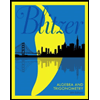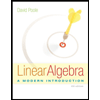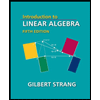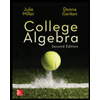
EP PRE-ALGEBRA-STUDENTWORKS PLUS(1 YR.)
10th Edition
ISBN: 9780078947483
Author: GLENCOE
Publisher: MCGRAW-HILL HIGHER EDUCATION
expand_more
expand_more
format_list_bulleted
Concept explainers
Question
Chapter 1.3, Problem 66S
To determine
To find: the product for the given numbers
Expert Solution & Answer
Answer to Problem 66S
The required value is
Explanation of Solution
Given:
Calculation:
Given numbers:
Multiplication of the numbers:
Conclusion:
Therefore, the required value is
Chapter 1 Solutions
EP PRE-ALGEBRA-STUDENTWORKS PLUS(1 YR.)
Ch. 1.1 - Prob. 1ACYPCh. 1.1 - Prob. 1BCYPCh. 1.1 - Prob. 2ACYPCh. 1.1 - Prob. 2BCYPCh. 1.1 - Prob. 2CCYPCh. 1.1 - Prob. 2DCYPCh. 1.1 - Prob. 3CYPCh. 1.1 - Prob. 1CYUCh. 1.1 - Prob. 2CYUCh. 1.1 - Prob. 3CYU
Ch. 1.1 - Prob. 4CYUCh. 1.1 - Prob. 5CYUCh. 1.1 - Prob. 6CYUCh. 1.1 - Prob. 7CYUCh. 1.1 - Prob. 8CYUCh. 1.1 - Prob. 9CYUCh. 1.1 - Prob. 10CYUCh. 1.1 - Prob. 11CYUCh. 1.1 - Prob. 12PPSCh. 1.1 - Prob. 13PPSCh. 1.1 - Prob. 14PPSCh. 1.1 - Prob. 15PPSCh. 1.1 - Prob. 16PPSCh. 1.1 - Prob. 17PPSCh. 1.1 - Prob. 18PPSCh. 1.1 - Prob. 19PPSCh. 1.1 - Prob. 20PPSCh. 1.1 - Prob. 21PPSCh. 1.1 - Prob. 22PPSCh. 1.1 - Prob. 23PPSCh. 1.1 - Prob. 24PPSCh. 1.1 - Prob. 25PPSCh. 1.1 - Prob. 26PPSCh. 1.1 - Prob. 27PPSCh. 1.1 - Prob. 28PPSCh. 1.1 - Prob. 29PPSCh. 1.1 - Prob. 30PPSCh. 1.1 - Prob. 31PPSCh. 1.1 - Prob. 32PPSCh. 1.1 - Prob. 33PPSCh. 1.1 - Prob. 34HPCh. 1.1 - Prob. 35HPCh. 1.1 - Prob. 36HPCh. 1.1 - Prob. 37HPCh. 1.1 - Prob. 38HPCh. 1.1 - Prob. 39STPCh. 1.1 - Prob. 40STPCh. 1.1 - Prob. 41STPCh. 1.1 - Prob. 42STPCh. 1.2 - Prob. 1ACYPCh. 1.2 - Prob. 1BCYPCh. 1.2 - Prob. 2ACYPCh. 1.2 - Prob. 2BCYPCh. 1.2 - Prob. 3ACYPCh. 1.2 - Prob. 3BCYPCh. 1.2 - Prob. 3CCYPCh. 1.2 - Prob. 4CYPCh. 1.2 - Prob. 1CYUCh. 1.2 - Prob. 2CYUCh. 1.2 - Prob. 3CYUCh. 1.2 - Prob. 4CYUCh. 1.2 - Prob. 5CYUCh. 1.2 - Prob. 6CYUCh. 1.2 - Prob. 7CYUCh. 1.2 - Prob. 8CYUCh. 1.2 - Prob. 9CYUCh. 1.2 - Prob. 10CYUCh. 1.2 - Prob. 11CYUCh. 1.2 - Prob. 12PPSCh. 1.2 - Prob. 13PPSCh. 1.2 - Prob. 14PPSCh. 1.2 - Prob. 15PPSCh. 1.2 - Prob. 16PPSCh. 1.2 - Prob. 17PPSCh. 1.2 - Prob. 18PPSCh. 1.2 - Prob. 19PPSCh. 1.2 - Prob. 20PPSCh. 1.2 - Prob. 21PPSCh. 1.2 - Prob. 22PPSCh. 1.2 - Prob. 23PPSCh. 1.2 - Prob. 24PPSCh. 1.2 - Prob. 25PPSCh. 1.2 - Prob. 26PPSCh. 1.2 - Prob. 27PPSCh. 1.2 - Prob. 28PPSCh. 1.2 - Prob. 29PPSCh. 1.2 - Prob. 30PPSCh. 1.2 - Prob. 31PPSCh. 1.2 - Prob. 32PPSCh. 1.2 - Prob. 33PPSCh. 1.2 - Prob. 34PPSCh. 1.2 - Prob. 35PPSCh. 1.2 - Prob. 36PPSCh. 1.2 - Prob. 37PPSCh. 1.2 - Prob. 38PPSCh. 1.2 - Prob. 39PPSCh. 1.2 - Prob. 40PPSCh. 1.2 - Prob. 41HPCh. 1.2 - Prob. 42HPCh. 1.2 - Prob. 43HPCh. 1.2 - Prob. 44HPCh. 1.2 - Prob. 45STPCh. 1.2 - Prob. 46STPCh. 1.2 - Prob. 47STPCh. 1.2 - Prob. 48STPCh. 1.2 - Prob. 49SRCh. 1.2 - Prob. 50SRCh. 1.2 - Prob. 51SRCh. 1.2 - Prob. 52SRCh. 1.2 - Prob. 53SRCh. 1.2 - Prob. 54SRCh. 1.2 - Prob. 55SRCh. 1.2 - Prob. 56SRCh. 1.2 - Prob. 57SRCh. 1.2 - Prob. 58SRCh. 1.2 - Prob. 59SRCh. 1.2 - Prob. 60SRCh. 1.2 - Prob. 61SCh. 1.2 - Prob. 62SCh. 1.2 - Prob. 63SCh. 1.2 - Prob. 64SCh. 1.3 - Prob. 1CYPCh. 1.3 - Prob. 2ACYPCh. 1.3 - Prob. 2BCYPCh. 1.3 - Prob. 2CCYPCh. 1.3 - Prob. 2DCYPCh. 1.3 - Prob. 3ACYPCh. 1.3 - Prob. 3BCYPCh. 1.3 - Prob. 4CYPCh. 1.3 - Prob. 1CYUCh. 1.3 - Prob. 2CYUCh. 1.3 - Prob. 3CYUCh. 1.3 - Prob. 4CYUCh. 1.3 - Prob. 5CYUCh. 1.3 - Prob. 6CYUCh. 1.3 - Prob. 7CYUCh. 1.3 - Prob. 8CYUCh. 1.3 - Prob. 9CYUCh. 1.3 - Prob. 10CYUCh. 1.3 - Prob. 11CYUCh. 1.3 - Prob. 12CYUCh. 1.3 - Prob. 13CYUCh. 1.3 - Prob. 14CYUCh. 1.3 - Prob. 15PPSCh. 1.3 - Prob. 16PPSCh. 1.3 - Prob. 17PPSCh. 1.3 - Prob. 18PPSCh. 1.3 - Prob. 19PPSCh. 1.3 - Prob. 20PPSCh. 1.3 - Prob. 21PPSCh. 1.3 - Prob. 22PPSCh. 1.3 - Prob. 23PPSCh. 1.3 - Prob. 24PPSCh. 1.3 - Prob. 25PPSCh. 1.3 - Prob. 26PPSCh. 1.3 - Prob. 27PPSCh. 1.3 - Prob. 28PPSCh. 1.3 - Prob. 29PPSCh. 1.3 - Prob. 30PPSCh. 1.3 - Prob. 31PPSCh. 1.3 - Prob. 32PPSCh. 1.3 - Prob. 33PPSCh. 1.3 - Prob. 34PPSCh. 1.3 - Prob. 35PPSCh. 1.3 - Prob. 36PPSCh. 1.3 - Prob. 37PPSCh. 1.3 - Prob. 38PPSCh. 1.3 - Prob. 39PPSCh. 1.3 - Prob. 40PPSCh. 1.3 - Prob. 41PPSCh. 1.3 - Prob. 42PPSCh. 1.3 - Prob. 43PPSCh. 1.3 - Prob. 44HPCh. 1.3 - Prob. 45HPCh. 1.3 - Prob. 46HPCh. 1.3 - Prob. 47HPCh. 1.3 - Prob. 48HPCh. 1.3 - Prob. 49STPCh. 1.3 - Prob. 50STPCh. 1.3 - Prob. 51STPCh. 1.3 - Prob. 52STPCh. 1.3 - Prob. 53SRCh. 1.3 - Prob. 54SRCh. 1.3 - Prob. 55SRCh. 1.3 - Prob. 56SRCh. 1.3 - Prob. 57SRCh. 1.3 - Prob. 58SRCh. 1.3 - Prob. 59SRCh. 1.3 - Prob. 60SRCh. 1.3 - Prob. 61SRCh. 1.3 - Prob. 62SRCh. 1.3 - Prob. 63SRCh. 1.3 - Prob. 64SCh. 1.3 - Prob. 65SCh. 1.3 - Prob. 66SCh. 1.3 - Prob. 67SCh. 1.3 - Prob. 68SCh. 1.3 - Prob. 69SCh. 1.3 - Prob. 70SCh. 1.3 - Prob. 71SCh. 1.4 - Prob. 1ACYPCh. 1.4 - Prob. 1BCYPCh. 1.4 - Prob. 1CCYPCh. 1.4 - Prob. 1DCYPCh. 1.4 - Prob. 2ACYPCh. 1.4 - Prob. 2BCYPCh. 1.4 - Prob. 3CYPCh. 1.4 - Prob. 4ACYPCh. 1.4 - Prob. 4BCYPCh. 1.4 - Prob. 1CYUCh. 1.4 - Prob. 2CYUCh. 1.4 - Prob. 3CYUCh. 1.4 - Prob. 4CYUCh. 1.4 - Prob. 5CYUCh. 1.4 - Prob. 6CYUCh. 1.4 - Prob. 7CYUCh. 1.4 - Prob. 8CYUCh. 1.4 - Prob. 9CYUCh. 1.4 - Prob. 10CYUCh. 1.4 - Prob. 11CYUCh. 1.4 - Prob. 12PPSCh. 1.4 - Prob. 13PPSCh. 1.4 - Prob. 14PPSCh. 1.4 - Prob. 15PPSCh. 1.4 - Prob. 16PPSCh. 1.4 - Prob. 17PPSCh. 1.4 - Prob. 18PPSCh. 1.4 - Prob. 19PPSCh. 1.4 - Prob. 20PPSCh. 1.4 - Prob. 21PPSCh. 1.4 - Prob. 22PPSCh. 1.4 - Prob. 23PPSCh. 1.4 - Prob. 24PPSCh. 1.4 - Prob. 25PPSCh. 1.4 - Prob. 26PPSCh. 1.4 - Prob. 27PPSCh. 1.4 - Prob. 28PPSCh. 1.4 - Prob. 29PPSCh. 1.4 - Prob. 30PPSCh. 1.4 - Prob. 31PPSCh. 1.4 - Prob. 32PPSCh. 1.4 - Prob. 33PPSCh. 1.4 - Prob. 34PPSCh. 1.4 - Prob. 35PPSCh. 1.4 - Prob. 36HPCh. 1.4 - Prob. 37HPCh. 1.4 - Prob. 38HPCh. 1.4 - Prob. 39HPCh. 1.4 - Prob. 40HPCh. 1.4 - Prob. 41STPCh. 1.4 - Prob. 42STPCh. 1.4 - Prob. 43STPCh. 1.4 - Prob. 44STPCh. 1.4 - Prob. 45SRCh. 1.4 - Prob. 46SRCh. 1.4 - Prob. 47SRCh. 1.4 - Prob. 48SRCh. 1.4 - Prob. 49SRCh. 1.4 - Prob. 50SRCh. 1.4 - Prob. 51SRCh. 1.4 - Prob. 52SCh. 1.4 - Prob. 53SCh. 1.4 - Prob. 54SCh. 1.4 - Prob. 55SCh. 1.4 - Prob. 56SCh. 1.4 - Prob. 57SCh. 1.5 - Prob. 1CYPCh. 1.5 - Prob. 2ACYPCh. 1.5 - Prob. 2BCYPCh. 1.5 - Prob. 1CYUCh. 1.5 - Prob. 2CYUCh. 1.5 - Prob. 3CYUCh. 1.5 - Prob. 4PPSCh. 1.5 - Prob. 5PPSCh. 1.5 - Prob. 6PPSCh. 1.5 - Prob. 7PPSCh. 1.5 - Prob. 8PPSCh. 1.5 - Prob. 9PPSCh. 1.5 - Prob. 10PPSCh. 1.5 - Prob. 11PPSCh. 1.5 - Prob. 12HPCh. 1.5 - Prob. 13HPCh. 1.5 - Prob. 14HPCh. 1.5 - Prob. 15STPCh. 1.5 - Prob. 16STPCh. 1.5 - Prob. 17STPCh. 1.5 - Prob. 18STPCh. 1.5 - Prob. 19SRCh. 1.5 - Prob. 20SRCh. 1.5 - Prob. 21SRCh. 1.5 - Prob. 22SRCh. 1.5 - Prob. 23SRCh. 1.5 - Prob. 24SRCh. 1.5 - Prob. 25SRCh. 1.5 - Prob. 26SRCh. 1.5 - Prob. 27SRCh. 1.5 - Prob. 28SRCh. 1.5 - Prob. 29SRCh. 1.5 - Prob. 30SRCh. 1.5 - Prob. 31SRCh. 1.5 - Prob. 32SCh. 1.5 - Prob. 33SCh. 1.5 - Prob. 34SCh. 1.5 - Prob. 35SCh. 1.6 - Prob. 1CYPCh. 1.6 - Prob. 2CYPCh. 1.6 - Prob. 3ACYPCh. 1.6 - Prob. 3BCYPCh. 1.6 - Prob. 3CCYPCh. 1.6 - Prob. 1CYUCh. 1.6 - Prob. 2PPSCh. 1.6 - Prob. 3PPSCh. 1.6 - Prob. 4PPSCh. 1.6 - Prob. 5PPSCh. 1.6 - Prob. 6PPSCh. 1.6 - Prob. 7PPSCh. 1.6 - Prob. 8PPSCh. 1.6 - Prob. 9PPSCh. 1.6 - Prob. 10PPSCh. 1.6 - Prob. 11PPSCh. 1.6 - Prob. 12PPSCh. 1.6 - Prob. 13PPSCh. 1.6 - Prob. 14PPSCh. 1.6 - Prob. 15PPSCh. 1.6 - Prob. 16HPCh. 1.6 - Prob. 17HPCh. 1.6 - Prob. 18HPCh. 1.6 - Prob. 19HPCh. 1.6 - Prob. 20HPCh. 1.6 - Prob. 21HPCh. 1.6 - Prob. 22HPCh. 1.6 - Prob. 23STPCh. 1.6 - Prob. 24STPCh. 1.6 - Prob. 25STPCh. 1.6 - Prob. 26STPCh. 1.6 - Prob. 27SRCh. 1.6 - Prob. 28SRCh. 1.6 - Prob. 29SRCh. 1.6 - Prob. 30SRCh. 1.6 - Prob. 31SRCh. 1.6 - Prob. 32SRCh. 1.6 - Prob. 33SRCh. 1.6 - Prob. 34SCh. 1.6 - Prob. 35SCh. 1.6 - Prob. 36SCh. 1.6 - Prob. 37SCh. 1.6 - Prob. 38SCh. 1.6 - Prob. 39SCh. 1 - Prob. 1QCCh. 1 - Prob. 2QCCh. 1 - Prob. 3QCCh. 1 - Prob. 4QCCh. 1 - Prob. 5QCCh. 1 - Prob. 6QCCh. 1 - Prob. 7QCCh. 1 - Prob. 8QCCh. 1 - Prob. 9QCCh. 1 - Prob. 10QCCh. 1 - Prob. 11QCCh. 1 - Prob. 12QCCh. 1 - Prob. 13QCCh. 1 - Prob. 14QCCh. 1 - Prob. 15QCCh. 1 - Prob. 16QCCh. 1 - Prob. 17QCCh. 1 - Prob. 18QCCh. 1 - Prob. 19QCCh. 1 - Prob. 1MCQCh. 1 - Prob. 2MCQCh. 1 - Prob. 3MCQCh. 1 - Prob. 4MCQCh. 1 - Prob. 5MCQCh. 1 - Prob. 6MCQCh. 1 - Prob. 7MCQCh. 1 - Prob. 8MCQCh. 1 - Prob. 9MCQCh. 1 - Prob. 10MCQCh. 1 - Prob. 11MCQCh. 1 - Prob. 12MCQCh. 1 - Prob. 13MCQCh. 1 - Prob. 14MCQCh. 1 - Prob. 15MCQCh. 1 - Prob. 16MCQCh. 1 - Prob. 17MCQCh. 1 - Prob. 18MCQCh. 1 - Prob. 19MCQCh. 1 - Prob. 20MCQCh. 1 - Prob. 21MCQCh. 1 - Prob. 22MCQCh. 1 - Prob. 23MCQCh. 1 - Prob. 24MCQCh. 1 - Prob. 25MCQCh. 1 - Prob. 1SGRCh. 1 - Prob. 2SGRCh. 1 - Prob. 3SGRCh. 1 - Prob. 4SGRCh. 1 - Prob. 5SGRCh. 1 - Prob. 6SGRCh. 1 - Prob. 7SGRCh. 1 - Prob. 8SGRCh. 1 - Prob. 9SGRCh. 1 - Prob. 10SGRCh. 1 - Prob. 11SGRCh. 1 - Prob. 12SGRCh. 1 - Prob. 13SGRCh. 1 - Prob. 14SGRCh. 1 - Prob. 15SGRCh. 1 - Prob. 16SGRCh. 1 - Prob. 17SGRCh. 1 - Prob. 18SGRCh. 1 - Prob. 19SGRCh. 1 - Prob. 20SGRCh. 1 - Prob. 21SGRCh. 1 - Prob. 22SGRCh. 1 - Prob. 23SGRCh. 1 - Prob. 24SGRCh. 1 - Prob. 25SGRCh. 1 - Prob. 26SGRCh. 1 - Prob. 27SGRCh. 1 - Prob. 28SGRCh. 1 - Prob. 29SGRCh. 1 - Prob. 30SGRCh. 1 - Prob. 1PTCh. 1 - Prob. 2PTCh. 1 - Prob. 3PTCh. 1 - Prob. 4PTCh. 1 - Prob. 5PTCh. 1 - Prob. 6PTCh. 1 - Prob. 7PTCh. 1 - Prob. 8PTCh. 1 - Prob. 9PTCh. 1 - Prob. 10PTCh. 1 - Prob. 11PTCh. 1 - Prob. 12PTCh. 1 - Prob. 13PTCh. 1 - Prob. 14PTCh. 1 - Prob. 15PTCh. 1 - Prob. 16PTCh. 1 - Prob. 17PTCh. 1 - Prob. 18PTCh. 1 - Prob. 19PTCh. 1 - Prob. 20PTCh. 1 - Prob. 21PTCh. 1 - Prob. 22PTCh. 1 - Prob. 23PTCh. 1 - Prob. 24PTCh. 1 - Prob. 25PTCh. 1 - Prob. 1ECh. 1 - Prob. 2ECh. 1 - Prob. 3ECh. 1 - Prob. 4ECh. 1 - Prob. 1STPCh. 1 - Prob. 2STPCh. 1 - Prob. 3STPCh. 1 - Prob. 4STPCh. 1 - Prob. 5STPCh. 1 - Prob. 6STPCh. 1 - Prob. 7STPCh. 1 - Prob. 8STPCh. 1 - Prob. 9STPCh. 1 - Prob. 10STPCh. 1 - Prob. 11STP
Additional Math Textbook Solutions
Find more solutions based on key concepts
Find how many SDs above the mean price would be predicted to cost.
Intro Stats, Books a la Carte Edition (5th Edition)
Children of First Ladies This list represents the number of children for the first six “first ladies” of the Un...
Introductory Statistics
ASSESSMENT Find the first five terms in sequences with the following nth terms. a. n2+2 b. 5n+1 c. 10n1 d. 3n2 ...
A Problem Solving Approach To Mathematics For Elementary School Teachers (13th Edition)
TRY IT YOURSELF 1
Find the mean of the points scored by the 51 winning teams listed on page 39.
Elementary Statistics: Picturing the World (7th Edition)
A pair of fair dice is rolled. What is the probability that the second die lands on a higher value than does th...
A First Course in Probability (10th Edition)
CHECK POINT 1 Find a counterexample to show that the statement The product of two two-digit numbers is a three-...
Thinking Mathematically (6th Edition)
Knowledge Booster
Learn more about
Need a deep-dive on the concept behind this application? Look no further. Learn more about this topic, algebra and related others by exploring similar questions and additional content below.Similar questions
- A small college has 800students, 10% of which are left-handed. Suppose they take an SRS of 8students. Let [L=] the number of left-handed students in the sample. Which of the following would find [P(L=2)]?arrow_forward[2 01 3. (12 pts) Let A = 1 1 and b = 1 L2 1] 213 [2] (1) (2) Use the Gram-Schmidt process to find an orthonormal basis for the column space of A. Factor A into a product QR, where Q has an orthonormal set of column vectors and R is upper triangular. (3) Solve the least squares problem Ax = b.arrow_forward22.) Mr. Vedrani has a pool with a deck built around it. The equation (2x+14)(2x+19) = 650 represents the relationship of the side lengths (in feet) of the entire pool area (in square feet). a.) If 350 represents the area of the pool and deck area, what do the expressions (2x+14) and (2x+19) each represent? b.) Using graphing technology, find x, the width of the deck around the pool. If necessary, round to the nearest tenth. x=arrow_forward
- How do I get common factors?arrow_forwardProblem #1 You apply to two different graduate programs at a specific university: one in geology and one in environmental sciences. Let P(G) = 0.8, where P(G) represents the probability that you get accepted into the geology program. Let P(E) = 0.72, where P(E) represents the probability that you get accepted into the environmental sciences program. Let P(GE) = 0.65. a). Create a Venn diagram that represents this information. b). First, calculate P(GUE). Then, using complete sentence, interpret what P(GUE) represents in the context of this problem.arrow_forwardProblem #3 Let P(G|Q) = 0.03, P(G) = 0.2, and P(Q) = 0.5. a). Find P(GnQ). b). Find P(G UQ). c). Are events G and Q independent or dependent? Explain your reasoning.arrow_forward
- Problem #4 Suppose a random variable, X, has the following probability distribution table. X 1 2 3 4 5 60 P(X=x) 0.29 0.11 0.32 0.18 a). Find P(X = 5). b). Find P(2≤ X ≤4). c). Find P(2arrow_forwardProblem #5 You play a game where you have a 35% chance of winning and a 65% chance of losing (no ties are permitted). If you play the game multiple times in a row, the probability of winning and losing remains the same for each attempt. a). If you play the game 40 times, what is the probability that you lose all of the 40 games? b). If you play the game 40 times, what is the probability that you win exactly 25 times?arrow_forward4. (18 pts) Suppose that A is a 3×3 matrix with eigenvalues 2₁ = 0, λ₂ = −1 and 23 = 1, and corresponding eigenvectors V₁ = 0 [] ΓΟΤ (1₁ = 0), V2 = (₁₁ = -1), V3 = (λ3 = 1). 12. (1) Find the matrix A. (2) Find A20 d Y(t) (3) Find the unique solution of the differential equation =AY(t), t≥ 0 dt with the initial condition Y(0) =arrow_forward
- [1 3 1] 2. (16 pts) Consider a matrix A = 273, determine [26 2 (1) The basis set for the column space of A. (2) The basis set for the row space of A. (3) The range space of A. (4) The basis set for the null space of A.arrow_forwardBrandon is an amateur marksman. When he takes aim at a particular target on the shooting range, there is a .1 probability that he will hit it. One day, Brandon decides to attempt to hit 10 such targets in a row. Assuming that Brandon is equally likely to hit each of the 10 targets, what is the probability that he will hit at least one of them?Round your answer to the nearest hundredth.arrow_forwardWhen Hugo is serving at a restaurant, there is a .03 probability that each party will request a high chair for a young child. During one hour, Hugo served 10 parties. Assuming that each party is equally likely to request a high chair, what is the probability that at least one party will request a high chair?Round your answer to the nearest hundredth.arrow_forward
arrow_back_ios
SEE MORE QUESTIONS
arrow_forward_ios
Recommended textbooks for you
 Algebra and Trigonometry (6th Edition)AlgebraISBN:9780134463216Author:Robert F. BlitzerPublisher:PEARSON
Algebra and Trigonometry (6th Edition)AlgebraISBN:9780134463216Author:Robert F. BlitzerPublisher:PEARSON Contemporary Abstract AlgebraAlgebraISBN:9781305657960Author:Joseph GallianPublisher:Cengage Learning
Contemporary Abstract AlgebraAlgebraISBN:9781305657960Author:Joseph GallianPublisher:Cengage Learning Linear Algebra: A Modern IntroductionAlgebraISBN:9781285463247Author:David PoolePublisher:Cengage Learning
Linear Algebra: A Modern IntroductionAlgebraISBN:9781285463247Author:David PoolePublisher:Cengage Learning Algebra And Trigonometry (11th Edition)AlgebraISBN:9780135163078Author:Michael SullivanPublisher:PEARSON
Algebra And Trigonometry (11th Edition)AlgebraISBN:9780135163078Author:Michael SullivanPublisher:PEARSON Introduction to Linear Algebra, Fifth EditionAlgebraISBN:9780980232776Author:Gilbert StrangPublisher:Wellesley-Cambridge Press
Introduction to Linear Algebra, Fifth EditionAlgebraISBN:9780980232776Author:Gilbert StrangPublisher:Wellesley-Cambridge Press College Algebra (Collegiate Math)AlgebraISBN:9780077836344Author:Julie Miller, Donna GerkenPublisher:McGraw-Hill Education
College Algebra (Collegiate Math)AlgebraISBN:9780077836344Author:Julie Miller, Donna GerkenPublisher:McGraw-Hill Education

Algebra and Trigonometry (6th Edition)
Algebra
ISBN:9780134463216
Author:Robert F. Blitzer
Publisher:PEARSON

Contemporary Abstract Algebra
Algebra
ISBN:9781305657960
Author:Joseph Gallian
Publisher:Cengage Learning

Linear Algebra: A Modern Introduction
Algebra
ISBN:9781285463247
Author:David Poole
Publisher:Cengage Learning

Algebra And Trigonometry (11th Edition)
Algebra
ISBN:9780135163078
Author:Michael Sullivan
Publisher:PEARSON

Introduction to Linear Algebra, Fifth Edition
Algebra
ISBN:9780980232776
Author:Gilbert Strang
Publisher:Wellesley-Cambridge Press

College Algebra (Collegiate Math)
Algebra
ISBN:9780077836344
Author:Julie Miller, Donna Gerken
Publisher:McGraw-Hill Education
Polynomials with Trigonometric Solutions (2 of 3: Substitute & solve); Author: Eddie Woo;https://www.youtube.com/watch?v=EnfhYp4o20w;License: Standard YouTube License, CC-BY
Quick Revision of Polynomials | Tricks to Solve Polynomials in Algebra | Maths Tricks | Letstute; Author: Let'stute;https://www.youtube.com/watch?v=YmDnGcol-gs;License: Standard YouTube License, CC-BY
Introduction to Polynomials; Author: Professor Dave Explains;https://www.youtube.com/watch?v=nPPNgin7W7Y;License: Standard Youtube License